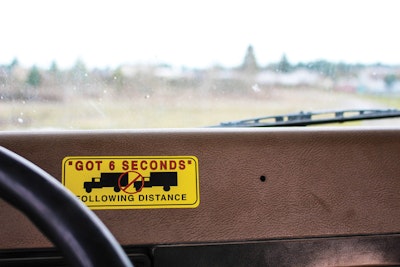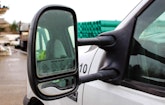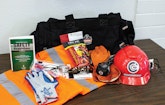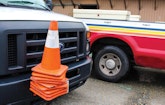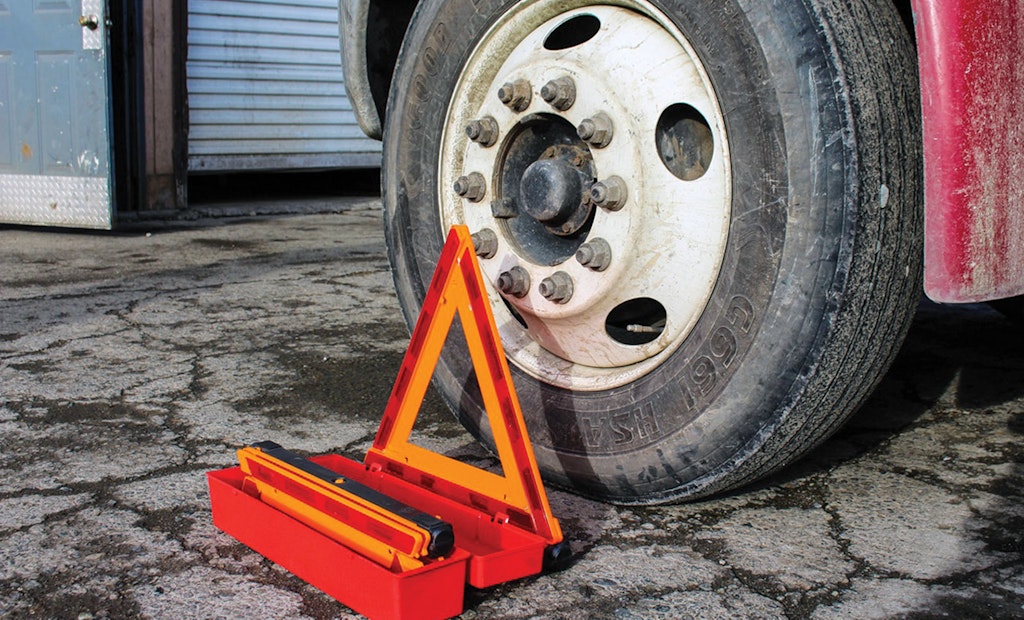Whether you have one vehicle or 100, your operators spend nearly all their time in or around their service vehicles.
Often, whether or not an operator follows proper safety protocol hangs on how easy it is for them to do so. They perform these job duties every day, and it is easy to become complacent when safety means going out of your way.
That’s why it’s important to have proper safety gear as part of your everyday fleet or vehicle monitoring program. While some aspects of vehicle safety are required under Department of Transportation regulations, many are just good sense.
FOR STARTERS
When it comes to DOT regulations, what’s most important is researching and understanding exactly what is required for your specific service vehicles, as they don’t all require the same gear.
For example, larger trucks often require fire extinguishers, and if you are hauling trailers or other equipment, the DOT specifies a certain grade of chain for securement.
“That’s important for compliance; a lot of companies don’t know that your chains have to be rated for all of the various equipment,” says Eric Wright, vice president of safety for Washington state-based Northwest Cascade, which maintains 300 service vehicles in its fleet. The business started in 1968 as a septic system installer and has grown to offer many construction-related services.
On a more basic level, most service vehicles are required by the DOT to carry reflective triangles or cones in case of roadside maintenance or accidents. Consider adding flashlights and emergency phones, especially if operators regularly drive long distances.
BEST PRACTICE
It’s a good idea to stock all vehicles with first-aid kits. First-aid kits are a universally applicable feature, which could be expanded depending on the service industry. They can be tailored to specific applications, such as adding an eyewash kit when drivers work around hazardous chemicals.
Bel-Art carries two mobile eyewash products — a larger version that can rinse both eyes simultaneously, in any orientation, and a smaller, 120 mL belt-pouch version.
“It’s highly mobile. It’s one-time use, but it’s sealed, and it has a long expiration date,” says Peter Yoo, product manager for SP Scienceware, parent company of Bel-Art. “So they can bring it wherever they need. The solution — it’s great not just for physical dirt or debris, but also different things like acids and alkalis.”
Northwest Cascade not only keeps first-aid kits on their vehicles, but also issues a personal first-aid kit to each operator.
The personal first-aid kit is part of a basic personal protective equipment, or PPE, bag that is provided. It also includes safety gear like a hard hat, two pairs of gloves, an orange vest, safety glasses (regular and tinted), headlamp, earplugs, and a safety regulations booklet.
In many cases, it’s not just providing the necessary equipment for operators, but making it as convenient as possible for operators to use that equipment.
Bel-Art offers an eyewear holder for safety glasses or goggles that can be installed in service vehicles. Other shelving units and organizational products across the market could be used for similar easy-access safety items.
WORTH A TRY
Beyond the basics, consider many safety-enhancing additions for your trucks.
Laws against cellphone and mobile device use are becoming more prevalent in states across the country, which makes Bluetooth and hands-free GPS options increasingly helpful.
Northwest Cascade stocks spill kits on their vehicles in case of oil or other hazardous waste spills. “The spill kit we carry as just a company policy,” Wright says. “Same as the first-aid kit.”
Needs are different for every operation, but some outfits benefit from going toward the far end of safety precaution, as Northwest Cascade has done with the addition of dashcams.
The company’s dashcams are integrated into a vehicle monitoring system that also records hard braking, speeding and other driver habits that could affect safety. “It has parameters that you can set, so it ties in with the vehicle, what’s happening with the vehicle, as well as the driver,” Wright says.
Backup cameras are fast becoming a standard feature on both service and pickup trucks, but they may be something worth adding to older trucks as well.
Small things can make a difference too, like stickers in the cab and on the mirrors of service trucks. Those are reminders for the busy operator to observe common safety practices.
“On the newer trucks, obviously there are lots of new safety features being incorporated,” Wright says. “Our newer trucks actually come with an orange seat belt, so you can tell if the drivers are wearing their seat belt or not.”
WORTH CAREFUL CONSIDERATION
Safety shouldn’t be a throwaway checklist item for any company. That being said, every organization has its own needs, and owners should think carefully about what is best for the operators. In the end, it depends on the specific industry, jobs that operators will be involved in, and frankly the operators themselves — the likelihood of any operator in question going out of their way to embrace safety.
All of these factors need to be considered when assessing safety protocol. The only thing that’s a certainty: There is no shortage of options.
